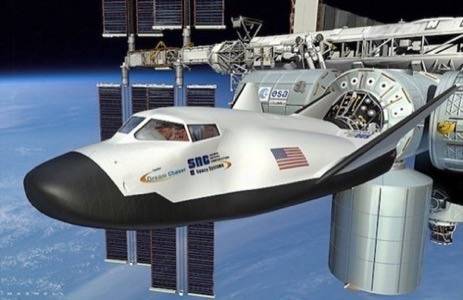
Dream Chaser, a reusable space plane designed to carry astronauts to and from a low orbit, passed its first flight test last week. This isn’t a capsule or a light space tourism craft. It’s a rugged, streamlined, privately built successor to NASA’s Space Shuttle, and it’s well on its way into orbit.
Built by Sierra Nevada Corporation, Dream Chaser passed its first “captive-carry” test, during which it was slung underneath an Erickson Air-Crane helicopter and pulled through the air, verifying its aerodynamic performance. Like the Space Shuttle, the new vehicle will launch vertically on the nose of a rocket and return to Earth as a lifting-body glider. It’s not the only space plane in development, but it’s the space-mission workhorse. Competing designs, such as those from Virgin Galactic, are mostly for sightseeing.
Dream Chaser’s typical re-entry only pulls about 1.5G. It can land on any airport runway. Unlike the Space Shuttle, its ablative heat shielding and nonvolatile thruster fuel allow it to be handled by ground crews immediately after landing. The plan is to build a whole fleet and keep them in constant rotation.
Dream Chaser was funded by NASA’s Commercial Crew Development program (CCDev), part of the government’s new strategy to reboot manned space flight with slimmer margins, more competition and private-sector efficiency. Sierra Nevada Corporation has received $100 million in CCDev grants over its two funding rounds so far. Dream Chaser became a high priority after SNC received the largest share of NASA’s initial round of CCDev funds in 2010.
A contractor for more established private space firms, the company employs over 2,000 people at 35 facilities in 16 U.S. states. It is designing the rocket engine for SpaceShipTwo, the private space plane venture built by Northrop Grumman subsidiary Scaled Composites. SpaceShipTwo will be operated by space tourism company Virgin Galactic, which has agreed to help market Dream Chaser’s services. Virgin also operates the White Knight Two jet that will serve as the Dream Chaser’s platform in drop trials.
Artist’s illustration of Dream Chaser docked at the International Space Station

In the rapidly accelerating private spaceflight industry, there is already a second generation of companies. But the demands of the mission have drawn top talent from aerospace firms old and new. Boeing was right alongside Sierra Nevada and other upstarts in both rounds of CCDev funding, landing over $92 million in round two for its seven-person CST-100 crew capsule. That program completed its preliminary software design review last month.
Dream Chaser also graduated in the same CCDev class as SpaceX, which received $75 million in CCDdev round two for the launch abort system onboard the Dragon spacecraft. That vehicle famously completed its landmark space mission last week, becoming the first private spacecraft to dock with the International Space Station and return safely to Earth.
The Dragon’s flight was a resounding success for the private space industry, and it showed on the faces of NASA staff when the vehicle berthed successfully with the ISS. The SpaceX capsule paved the way for other private spacecraft to dock with the station. It’s a flexible vehicle in its own right, capable of carrying crew as well as cargo. But it’s a capsule that must be precisely guided to a landing.
A lifting-body design like Dream Chaser can land at any airport, making manned spaceflights into more everyday affairs. With private companies relieving NASA’s burden of routine spaceflight service, the cash-strapped agency can double down on its bolder, longer-term missions.
What’s Next for Dream Chaser
The data from the captive-carry test will inform the next phase of approach and landing tests, in which the Dream Chaser will be carried aloft by a Scaled Composites White Knight Two jet and then dropped for a glider landing. The first of these tests is planned for later this year. The eventual mission of Dream Chaser is to carry crews to and from orbit, docking with the International Space Station.
Lead image credit: Sierra Nevada Corporation / Space.com
CG image via Wikimedia Commons

















